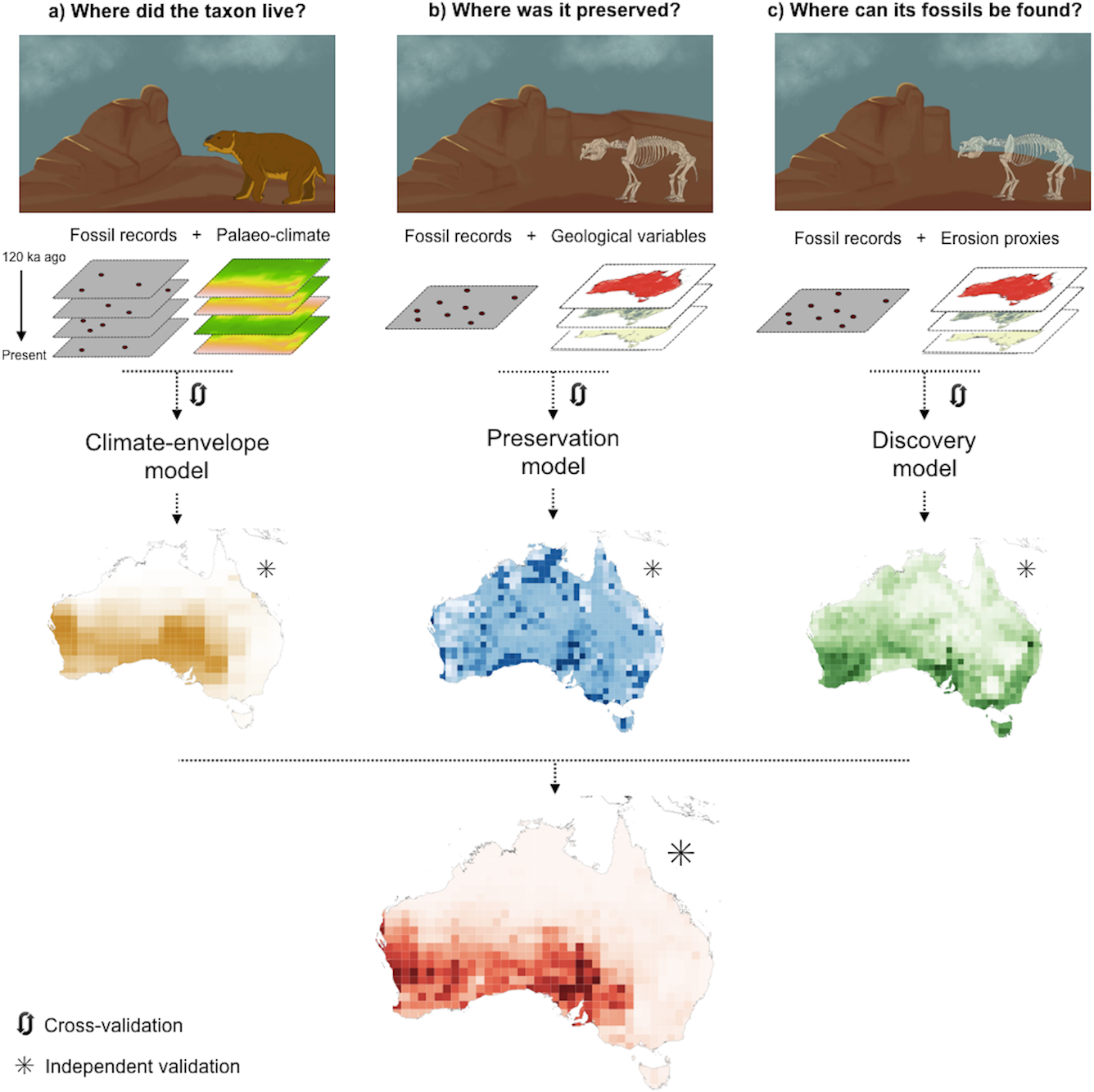
Where to dig for fossils: Combining climate-envelope, taphonomy and discovery models
Fossils represent invaluable data to reconstruct the past history of life, yet fossil-rich sites are often rare and difficult to find. The traditional fossil-hunting approach focuses on small areas and has not yet taken advantage of modelling techniques commonly used in ecology to account for an organism?s past distributions. We propose a new method to assist finding fossils at continental scales based on modelling the past distribution of species, the geological suitability of fossil preservation and the likelihood of fossil discovery in the field, and apply it to several genera of Australian megafauna that went extinct in the Late Quaternary. Our models predicted higher fossil potentials for independent sites than for randomly selected locations (mean Kolmogorov-Smirnov statistic = 0.66). We demonstrate the utility of accounting for the distribution history of fossil taxa when trying to find the most suitable areas to look for fossils. For some genera, the probability of finding fossils based on simple climate-envelope models was higher than the probability based on models incorporating current conditions associated with fossil preservation and discovery as predictors. However, combining the outputs from climate-envelope, preservation, and discovery models resulted in the most accurate predictions of potential fossil sites at a continental scale. We proposed potential areas to discover new fossils of Diprotodon, Zygomaturus, Protemnodon, Thylacoleo, and Genyornis, and provide guidelines on how to apply our approach to assist fossil hunting in other continents and geological settings.